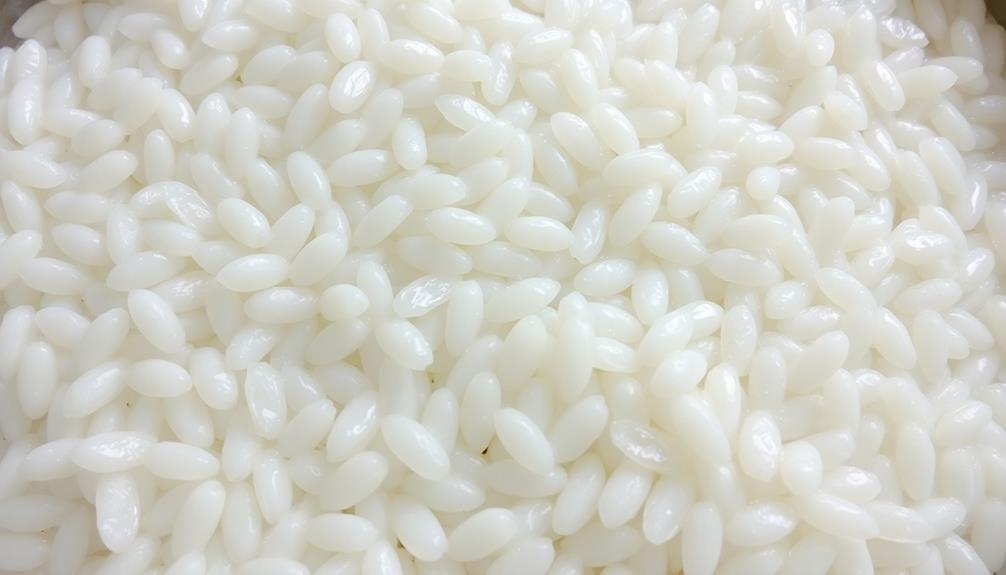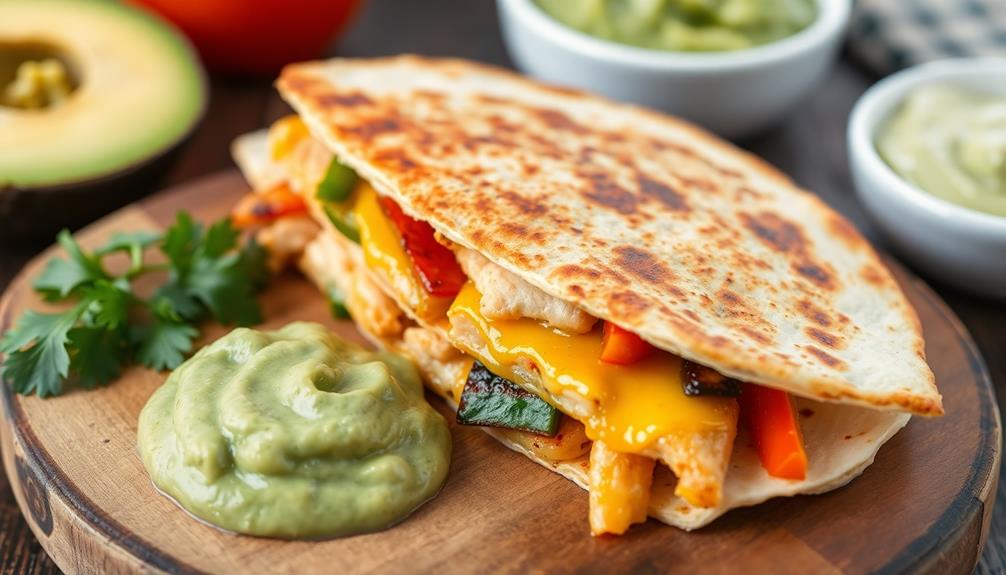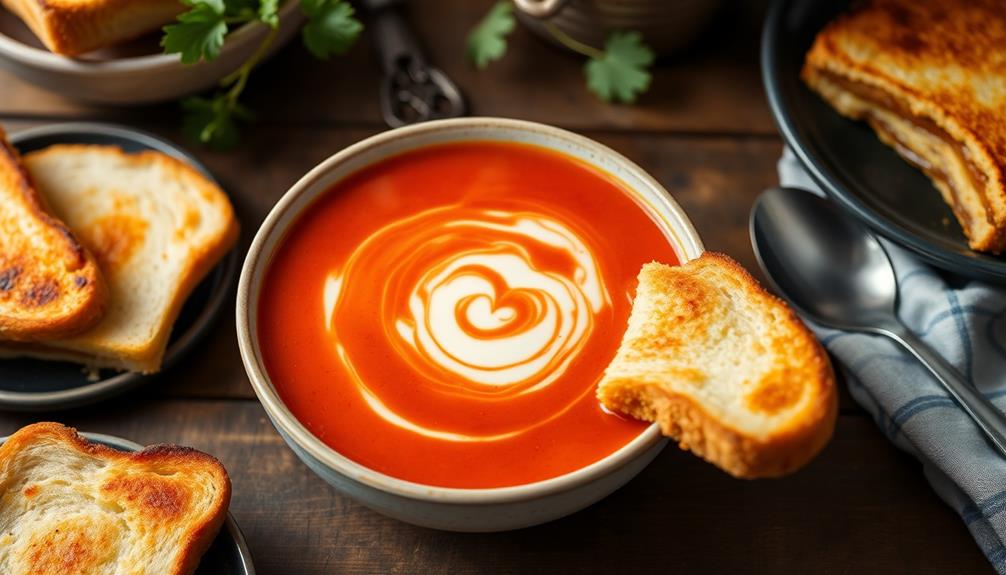Achieving perfect white rice doesn't have to be complicated. Start by rinsing the rice thoroughly to remove excess starch, then use a 1:1.5 rice-to-water ratio. Bring it to a boil, reduce heat, cover, and simmer for 15-20 minutes until tender. Let it sit for 5-10 minutes after cooking to finish steaming. This simple process results in fluffy, evenly cooked grains that are the foundation for countless dishes. Discover more about the history and cultural significance of this staple food, as well as techniques to master it.
Key Takeaways
- Rinse rice thoroughly to remove excess starch for a fluffy texture.
- Use a precise 1:1.5 rice-to-water ratio for consistent cooking results.
- Simmer rice covered for 15-20 minutes, then let it rest for 5-10 minutes to finish steaming.
- Versatile white rice can be used as a base for various dishes, from stir-fries to salads.
- Adjust cooking times and water levels based on the specific rice variety to achieve the perfect consistency.
History
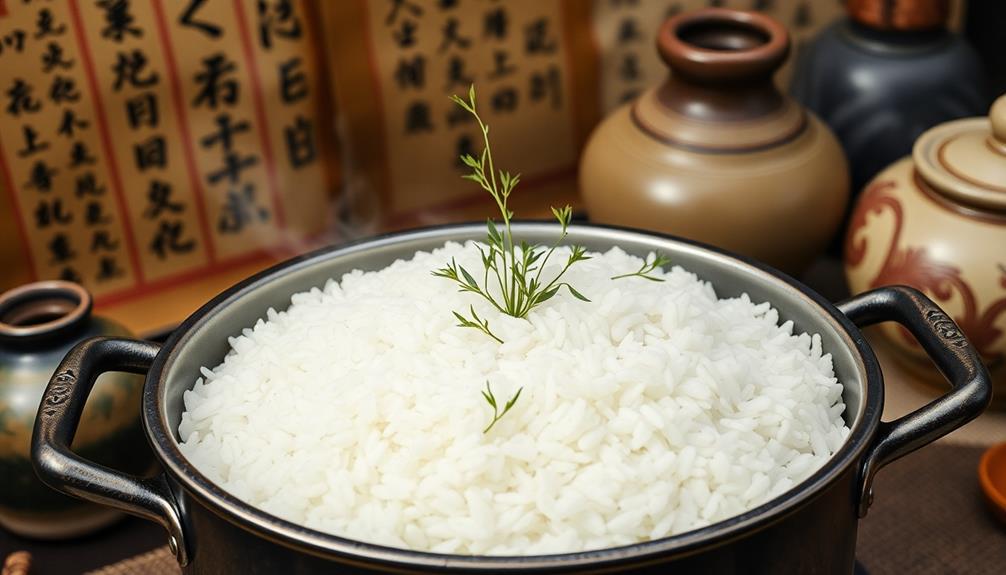
Rice has been a staple food for centuries, with its origins tracing back to ancient civilizations in Asia. The earliest evidence of rice cultivation dates back to around 2500 BC in China, where it became a central part of the diet and an integral component of cultural traditions.
Over time, the cultivation of rice spread throughout Asia, with each region developing unique varieties and cooking methods. In Japan, for example, the production of short-grain, sticky rice became a hallmark of the cuisine, while in India, the aromatic basmati rice gained popularity.
As global trade and exploration expanded, rice began to make its way to other parts of the world, including Europe and the Americas.
Today, rice remains one of the most widely consumed foods globally, with countless cultivars and preparation techniques that reflect the diverse cultural heritage of this humble grain.
Recipe
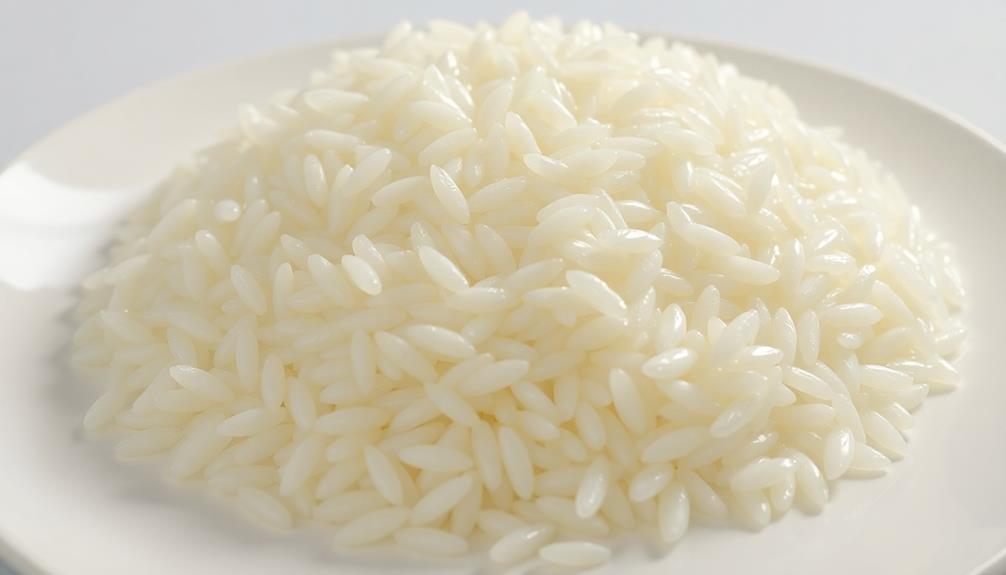
Cooking perfect white rice is a simple yet essential skill in the kitchen. The key to achieving fluffy, tender grains lies in the right combination of water, rice, and cooking technique. Whether you're preparing a side dish or a base for your favorite meal, mastering this basic recipe will ensure your rice turns out just right every time.
The type of rice you use can also impact the final result. Long-grain white rice, such as basmati or jasmine, is a popular choice for its light and separate grains. Short-grain white rice, on the other hand, tends to be stickier and creamier in texture, making it ideal for sushi or rice pudding.
- 1 cup long-grain white rice
- 1 1/2 cups water
- 1/2 teaspoon salt (optional)
In a medium saucepan, combine the rice, water, and salt (if using). Bring the mixture to a boil over high heat. Once boiling, reduce the heat to low, cover the pan with a tight-fitting lid, and simmer for 15-20 minutes, or until the rice is tender and the liquid has been absorbed.
Remove the pan from the heat and let it sit, covered, for an additional 5 minutes to allow the rice to finish steaming. Fluff the rice with a fork before serving.
For best results, avoid lifting the lid during the cooking process, as this can release valuable steam and disrupt the cooking. Additionally, be mindful not to overcook the rice, as this can lead to a mushy texture.
With a little practice, you'll be able to consistently produce perfect white rice that complements a wide variety of dishes. With a little practice, you’ll be able to consistently produce perfect white rice that complements a wide variety of dishes. Understanding how to cook perfect white rice involves mastering the right water-to-rice ratio and cooking techniques to ensure the grains are fluffy and not sticky. Whether you’re preparing a hearty curry or a light stir-fry, perfectly cooked rice can elevate your meal to the next level.
Cooking Steps

First, you'll want to rinse the rice until the water runs clear.
Then, add the rice and water to a pot and bring it to a boil.
Once it's boiling, reduce the heat and let it simmer, covered, until the rice is tender.
Step 1. Rinse Rice Until Water Runs Clear
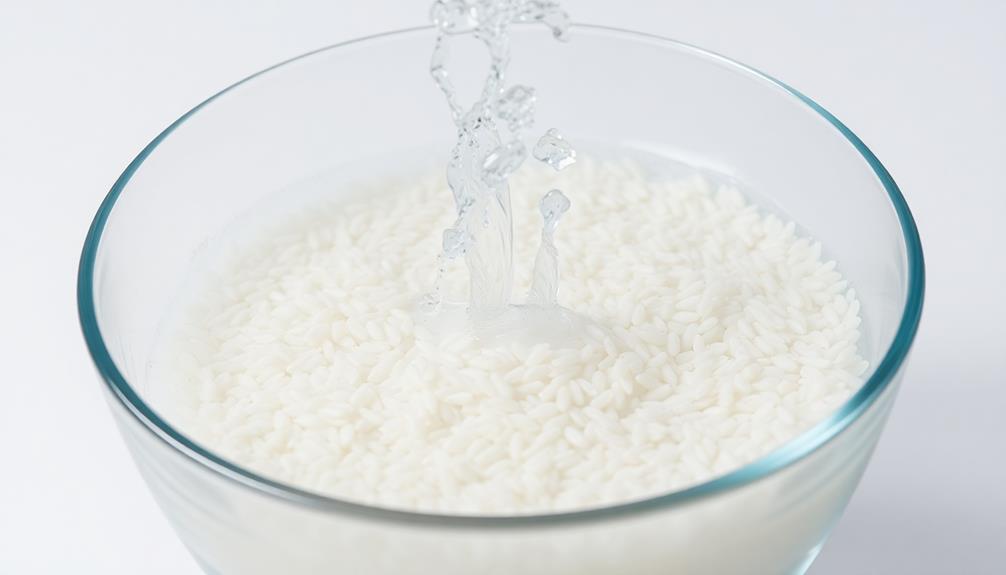
Rinsing the rice is an essential step in achieving the perfect texture and flavor. This simple process helps remove any excess starch on the grains, which can lead to a gummy or sticky final result.
To rinse the rice, start by placing it in a fine-mesh strainer or colander. Run cool water over the rice, using your fingers to gently stir and agitate the grains. Continue rinsing until the water runs clear, typically 2-3 minutes.
- Rinsing removes excess surface starch, preventing the rice from becoming gummy or clumped together.
- Use a fine-mesh strainer or colander to ensure no rice grains slip through.
- Gently stir the rice with your fingers to dislodge any stubborn starch.
- Continue rinsing until the water runs clear, usually taking 2-3 minutes.
Properly rinsing the rice is a crucial step that sets the stage for perfectly cooked, fluffy white rice.
Step 2. Add Rice and Water

With the rice rinsed, you can now proceed to add it and the appropriate amount of water to the pot. For every cup of rice, you'll need 1 1/2 cups of water. So, if you're cooking 2 cups of rice, you'll want to add 3 cups of water.
Gently pour the rice into the pot, then add the water. It's important to use the correct rice-to-water ratio to ensure your rice turns out perfectly cooked – not too dry or too mushy.
Once the rice and water are in the pot, give it a gentle stir to incorporate everything. Then, bring the mixture to a boil over high heat.
Once it reaches a boil, reduce the heat to low, cover the pot, and let it simmer. Simmering the rice for 15-20 minutes allows the grains to become tender and fluffy.
Avoid lifting the lid during this time, as that can release steam and affect the cooking process.
Step 3. Bring to a Boil
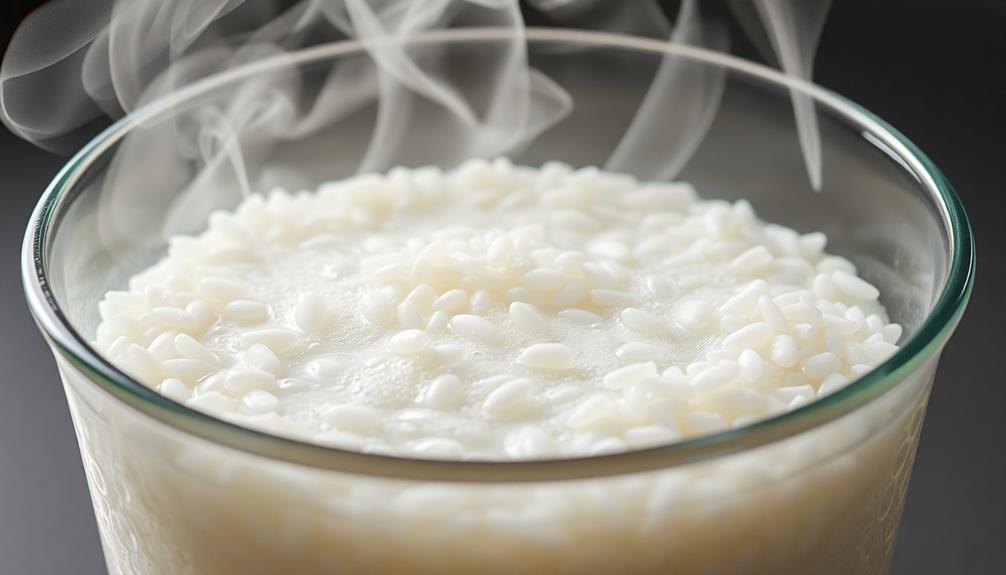
Once the rice and water are in the pot, give it a gentle stir to incorporate everything.
Then, turn the heat to high and bring the mixture to a boil. You'll know it's boiling when you see large bubbles rapidly breaking the surface.
This step is crucial, as it kickstarts the cooking process. The high heat causes the water to rapidly turn into steam, which in turn cooks the rice. Be sure to keep a close eye during this stage, as the water can quickly boil over if left unattended.
Once the water is at a full, rolling boil, reduce the heat to the lowest possible setting. This gentler simmer will allow the rice to cook through without scorching the bottom of the pot.
Cover the pot with a tight-fitting lid to trap the steam inside. Set a timer for 18-20 minutes, and resist the urge to peek until the timer goes off.
Step 4. Reduce Heat, Simmer Covered

Once the water is at a full, rolling boil, turn down the heat to the lowest possible setting. This lower temperature will allow the rice to simmer gently, slowly absorbing the water and cooking through without overcooking the exterior.
Cover the pot with a tight-fitting lid to trap the steam, which is essential for cooking the rice evenly.
Resist the urge to lift the lid and peek – this lets out valuable steam and disrupts the cooking process. Allow the rice to simmer for 15-20 minutes, or until the grains are tender and the liquid has been fully absorbed. The rice should have a fluffy, light texture when it's done.
Once the rice has finished simmering, remove the pot from the heat but keep it covered. Let it sit for an additional 5-10 minutes. This resting period allows the rice to firm up and the flavors to meld together before serving.
Step 5. Remove Lid and Fluff With Fork
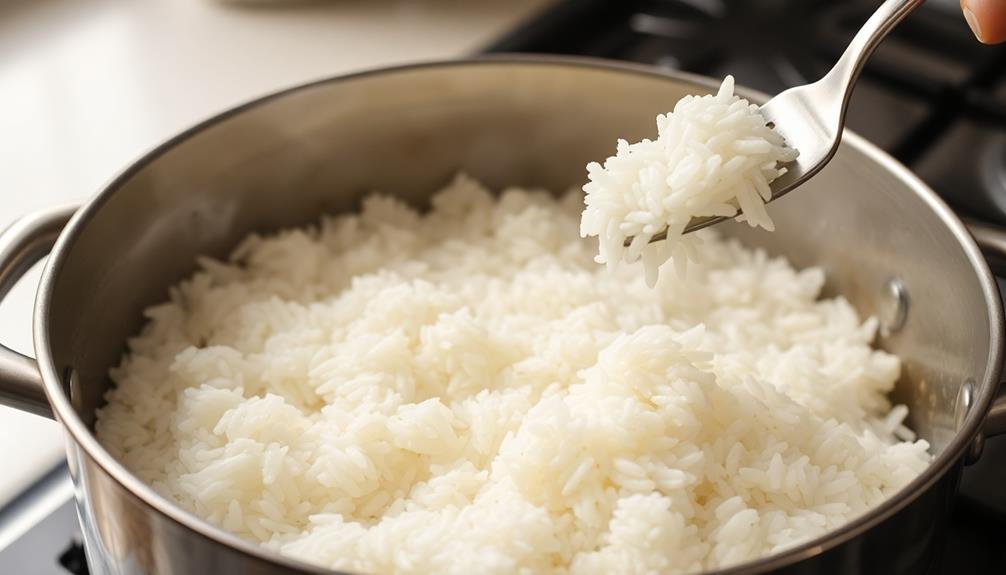
After the rice has rested, you'll want to remove the lid. This will allow the steam to escape, ensuring your rice doesn't become soggy or mushy.
Gently fluff the rice with a fork, making sure to reach all the way to the bottom of the pot. This action separates the grains, preventing them from sticking together and creating a light, fluffy texture.
- Remove the lid and let the steam escape.
- Use a fork to gently fluff the rice, separating the grains.
- Be sure to fluff the rice all the way to the bottom of the pot.
- The fluffing action helps to prevent the rice from becoming clumped or sticky.
- This step is crucial for achieving the perfect texture and consistency of your white rice.
Once the rice is fluffed, it's ready to be served and enjoyed.
Final Thoughts
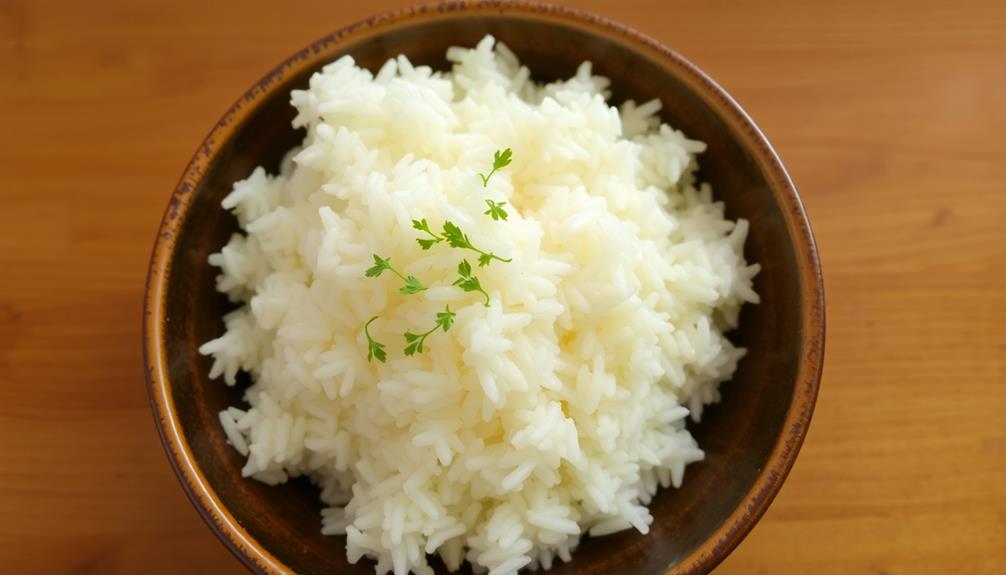
Cooking perfect white rice requires practice and patience, but the end result is well worth the effort. Though the steps may seem tedious, the payoff of fluffy, evenly cooked grains is undeniable. With a little know-how, you'll soon be whipping up restaurant-quality rice in the comfort of your own home.
The key is to resist the urge to lift the lid and peek. Doing so releases precious steam and can disrupt the cooking process. Trust the method, set a timer, and let the rice work its magic.
When the timer goes off, remove the lid and fluff the rice gently with a fork. This step incorporates air, leaving you with light, separate grains.
Mastering white rice may take some trial and error, but the satisfaction of perfecting this humble staple is unparalleled. Serve it as a side, use it in fried rice, or enjoy it on its own – the possibilities are endless. Whether you’re a beginner or an experienced cook, having a solid understanding of how to prepare rice will elevate countless dishes. Once you’ve mastered it, you can effortlessly transition into crafting an easy fried rice recipe by simply tossing in a few vegetables, proteins, and sauces of your choice. With this foundation, you’ll quickly find rice to be one of the most versatile and rewarding ingredients in your kitchen.
With a little practice, you'll be an expert rice cook in no time.
Frequently Asked Questions
How Long Can Cooked White Rice Be Stored?
You can store cooked white rice in the refrigerator for 3-5 days or in the freezer for up to 6 months. It's important to store it properly in an airtight container to maintain freshness and prevent spoilage.
Can I Freeze Cooked White Rice?
You can absolutely freeze cooked white rice. It'll keep in the freezer for up to 3 months. Just let it cool completely, then pack it into airtight containers or bags and pop it in the freezer.
What Is the Best Way to Reheat Leftover Rice?
You can reheat leftover rice in a few simple ways. The best method is to add a splash of water and reheat it in the microwave for 1-2 minutes, stirring halfway. You can also reheat it on the stovetop with a bit of water.
Can I Use a Rice Cooker Instead of the Stovetop?
Yes, you can use a rice cooker instead of the stovetop to reheat leftover rice. The rice cooker will gently warm the rice without drying it out, making it a convenient and easy option for reheating.
Is It Possible to Make White Rice Without a Recipe?
Absolutely! You can make white rice without a recipe. Just use a simple ratio of 1 part rice to 2 parts water. Adjust the cooking time based on the type of rice, and you'll have fluffy, perfect white rice every time.
